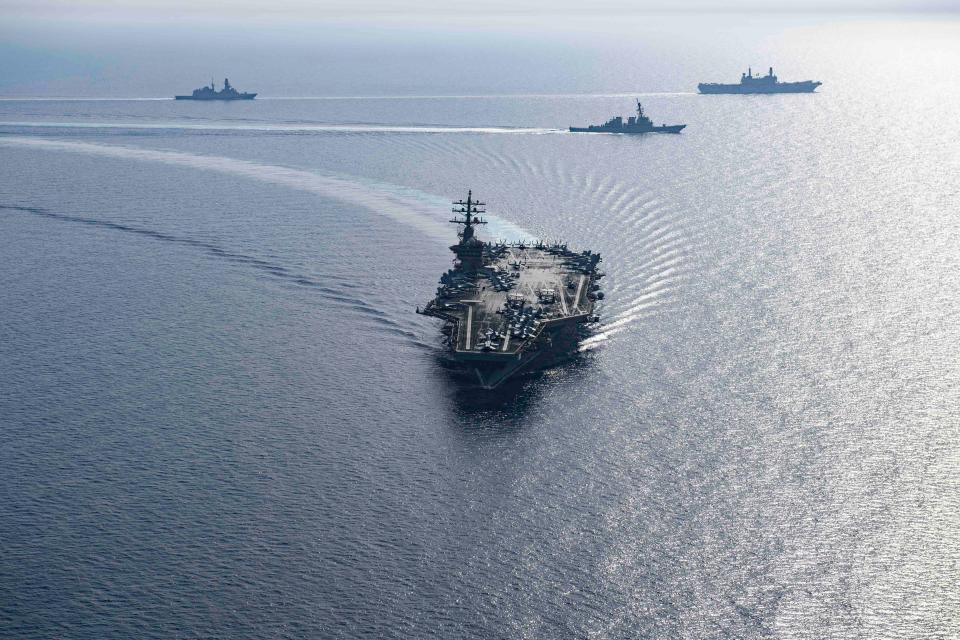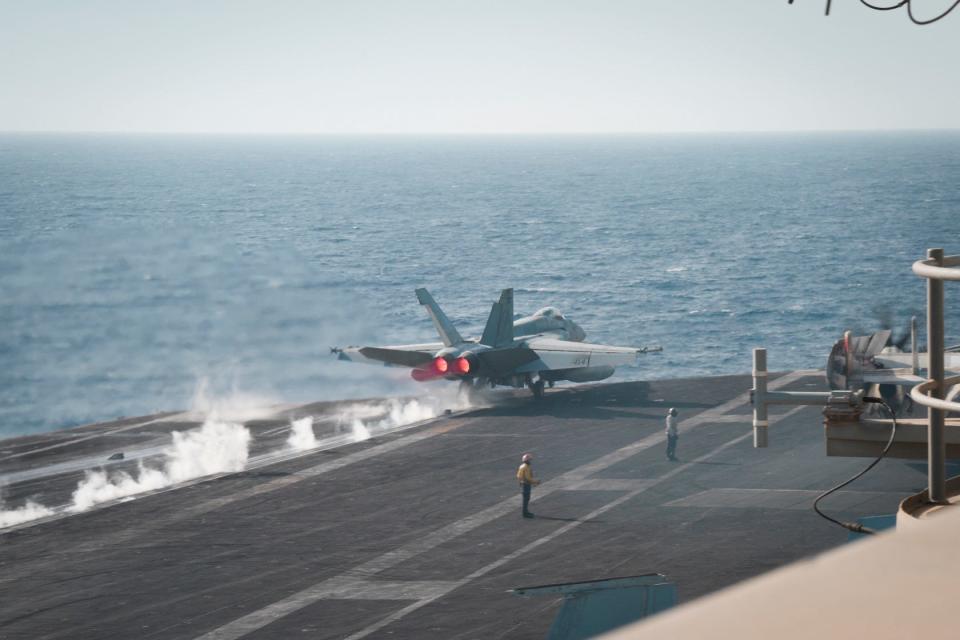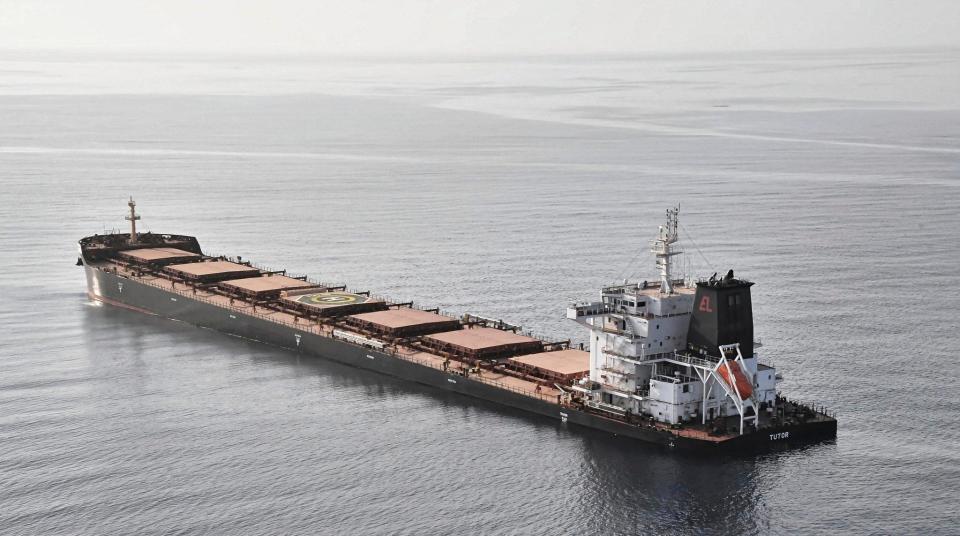The commander of an aircraft carrier battle group who oversaw the “unprecedented” battle in the Red Sea says the US Navy must ensure it is ready for a drone fight

-
The US Navy has learned many lessons from its months-long mission against the Houthis.
-
A former strike group commander who oversaw combat operations attributed the warships’ combat successes to training.
-
However, he said future operations would benefit from more drone training.
For months, American warships have been battling dangerous and unprecedented threats in the unstable waters of the Middle East. This experience is a valuable lesson for the US Navy.
The threat to commercial shipping in the Red Sea and Gulf of Aden from the Iran-backed Houthi rebels remains, with no sign of abating anytime soon, so the naval fight continues.
Among the lessons the naval forces have learned from their deployments off the coast of Yemen is that the Navy has more work to do in the fight against drones, wrote Rear Admiral Marc Miguez this week. The former carrier battle group commander who oversaw nearly the entire, twice-extended deployment of the Dwight D. Eisenhower carrier battle group was in charge of the U.S. Navy.
The strike group, consisting of the aircraft carrier Ike and several other warships, spent more than seven months before its recent withdrawal intercepting Houthi missiles and drones and carrying out preemptive strikes against rebels in Yemen to defend key shipping routes.


In his analysis of the operations against the Houthis, which included some lessons for future Navy combat operations, Miguez said the Eisenhower Force’s deployment to the Middle East was “unprecedented in every respect.”
“Our operations in the Red Sea include a long list of ‘firsts,’ and while we are still learning and evolving, with every missile and unmanned system we engage and destroy, we are gaining important combat experience that will help us shape future conflicts,” Miguez wrote in a commentary for the US Naval Institute.
More drone training
Miguez said there were several important qualities that helped the Navy fight an “unpredictable enemy.” One of those elements was the intensive training the task force received beforehand.
“Take it seriously,” he wrote. “Different adversaries require different tactics. The IKE CSG is trained to be agile, flexible and lethal.”


“I attribute our success in the Red Sea to the training we received prior to deployment, particularly the innovative approach to combat readiness,” Miguez added. However, he acknowledged that “future forces would benefit from incorporating more unmanned scenarios (airborne, surface, underwater) into the training continuum.”
In addition to missiles, the Houthis have used aerial drones throughout their campaign and have recently successfully used surface drones, also known as drone boats, in their attacks. In some cases, the rebels have attempted to use underwater drones, according to the US military.
Drones pose a growing threat in naval warfare, as Ukraine has demonstrated by inflicting severe damage on the Russian Black Sea Fleet with a fleet of drone boats.
These conflicts present new training and defense challenges for the Navy as it prepares for future warfare and the evolving drone threat. But the lessons for the Navy go beyond drones.


“The threats we are fighting in the Red Sea are not unique to the Houthis,” Miguez said. “The lessons learned from this historic deployment will be used to improve the defensive capabilities of the entire fleet, including threats identified by the Department of Defense.”
That’s why, he added, “every mission we track, every missile we detect, and every drone flight we see in action, we send the data to the experts on land so they can analyze it and make improvements for the next missions.”
Such was the case with the Houthis’ anti-ship missiles, weapons that had never been used in combat until this conflict. Miguez told Business Insider during a visit to the Ike in the Red Sea earlier this year that the Navy has learned a lot from dealing with these deadly threats.
Rear Admiral Kavon Hakimzadeh took command of the Eisenhower battle group from Miguez just days before it left the Red Sea on June 22 to return home from a restless deployment. The Theodore Roosevelt carrier battle group will soon take over Eisenhower’s duties in the Middle East.
By that time, the U.S. Navy will be without an aircraft carrier in the region for the first time in a long time. The restructuring of American naval assets comes on the heels of several active weeks by the Houthis, who attacked several merchant ships in June and stepped up their attacks with drone boats loaded with explosives.
Read the original article on Business Insider



